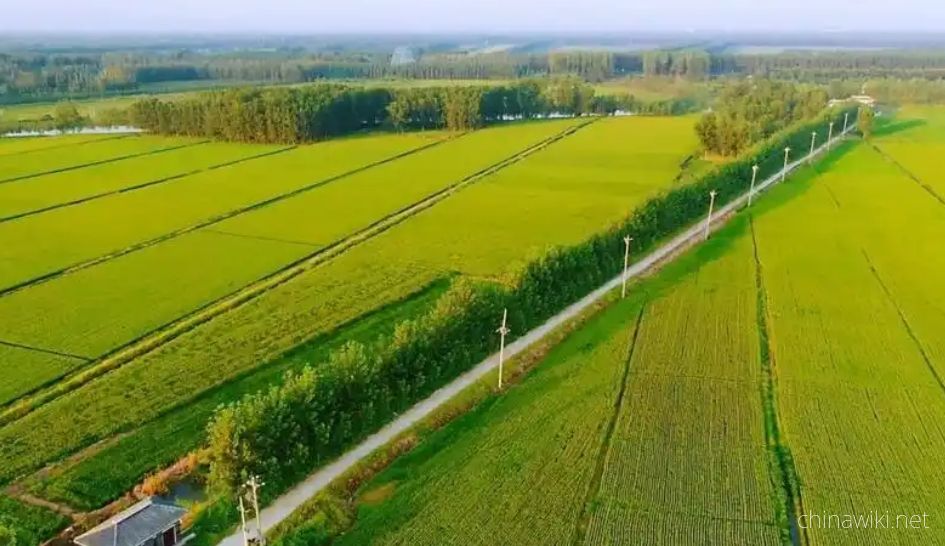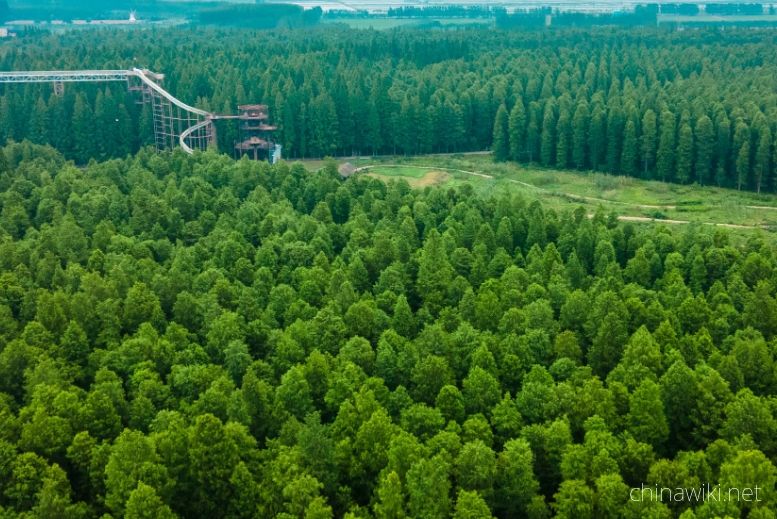Land Resources in Jiangsu Province
In December 2021, the main data bulletin of the third national land survey in jiangsu Province showed that there were 61.4839 million mu of arable land in the province, including 42.5758 million mu of paddy fields, accounting for 69.25%; 11.2311 million acres of irrigated land, accounting for 18.27%; 7.677 million acres of dry land, accounting for 12.48%. The province has 3.4558 million acres of gardens, of which 1.8683 million acres are orchards, accounting for 54.06%; 296700 acres of tea gardens, accounting for 8.59%; Other gardens cover 1.2908 million acres, accounting for 37.35%. The forest land covers 11.8067 million mu, of which 3.7831 million mu is deciduous forest land, accounting for 32.04%; 392400 acres of bamboo forest land, accounting for 3.32%; 126300 acres of shrubland, accounting for 1.07%; Other forest land covers 7.5049 million mu, accounting for 63.57%. 1.4039 million acres of grassland. 6.4076 million acres of wetlands, including 12400 acres of forest swamps, shrub swamps, and marshes, accounting for 0.20%; The coastal mudflat is 5.7587 million mu, accounting for 89.87%; The inland mudflat is 636500 mu, accounting for 9.93%. Urban villages and industrial and mining land cover 31.4752 million mu, of which 6.9544 million mu is urban land, accounting for 22.09%; 6.7166 million acres of towns were established, accounting for 21.34%; The village covers 16.5708 million mu, accounting for 52.65%; 832000 acres of mining land, accounting for 2.64%; 401400 acres of scenic spots and special land, accounting for 1.28%. Transportation land covers 5.4831 million mu, of which 251200 mu is railway land, accounting for 4.58%; 32400 acres of land for rail transit, accounting for 0.59%; The land for highways is 2.8983 million mu, accounting for 52.86%; 2.1116 million acres of rural roads, accounting for 38.51%; 49400 acres of airport land, accounting for 0.90%; Port and dock land covers 134300 acres, accounting for 2.45%; Pipeline transportation land covers 5900 acres, accounting for 0.11%. The land area for water bodies and water conservancy facilities is 38.1378 million mu, of which 9.3749 million mu is for river water surface, accounting for 24.58%; The lake surface covers 9.0599 million mu, accounting for 23.76%; The water surface of the reservoir is 667100 mu, accounting for 1.75%; The surface area of the pond is 11.5155 million mu, accounting for 30.19%; 5.86 million acres of ditches and canals, accounting for 15.37%; The land for hydraulic construction covers 1.6604 million acres, accounting for 4.35%. On July 7, 2023, the People's Government of jiangsu Province announced that there are 61.4186 million mu of arable land in jiangsu Province, accounting for 38.2% of the total land area; 59.9027 million mu of arable land protection and 53.4502 million mu of permanent basic farmland have been designated. On May 7, 2024, the People's Government of jiangsu Province announced that the land area of jiangsu Province is 107200 square kilometers, accounting for 1.12% of the national total; The total area of coastal mudflat is 5.729 million mu

Land Resources in Jiangsu Province
-
Jiangsu Province in the Pre Qin Period
Archaeological discoveries indicate that humans existed on the land of Jiangsu as early as the Paleolithic era, and cultural sites from the New Era have also been discovered in various parts of Jiangsu. During the Xia, Shang, and Zhou dynasties, the Jiang
Views: 14 Time 2024-12-28 -
Jiangsu Province during the Qin and Han Dynasties to the Southern and Northern Dynasties
After Emperor Qin Shi Huang unified China, the system of prefectures and counties was implemented. During the Qin Dynasty, the northern part of Jiangsu Province was divided into Sishui County, Donghai County, and Langye County, while the southern part of
Views: 10 Time 2024-12-28 -
Jiangsu Province during the Sui, Tang, Song, and Yuan Dynasties
In 581 AD, Emperor Wen of Sui unified China, with the northern part of Jiangsu roughly belonging to Xuzhou and the area south of the Huai River roughly belonging to Yangzhou. In 618 AD, the Li Tang Dynasty was established. During the Tang Dynasty, Jiangsu
Views: 15 Time 2024-12-28 -
Jiangsu Province during the Ming and Qing Dynasties
In 1368, Zhu Yuanzhang established a political power in Yingtian (now Nanjing) as the capital city. Later, Yingtian changed its name to Nanjing and then to Jingshi, also known as Zhili. After Ming Chengzu established the name Yongle, he moved the capital
Views: 19 Time 2024-12-28 -
Jiangsu Province during the Republic of China period
In 1912, the Republic of China established a provisional government in Nanjing, with Sun Yat sen serving as the interim president. In April of the same year, Yuan Shikai usurped the fruits of the revolution, and Jiangsu fell into the sphere of influence o
Views: 9 Time 2024-12-28 -
Jiangsu Province after the establishment of the People's Republic of China
In June 1949, the entire Jiangsu province was liberated. The territory is divided into three provincial-level administrative regions: northern Jiangsu, southern Jiangsu Administrative District, and Nanjing City. In January 1953, three provincial-level adm
Views: 9 Time 2024-12-28 -
The topography and geomorphology of Jiangsu Province
The terrain of Jiangsu Province is mainly plain, with a land area of 103229.17 square kilometers. Among them, the plain area accounts for 86.89%, reaching 89706.03 square kilometers, the hilly area is 11916.16 square kilometers, and the mountainous area i
Views: 11 Time 2024-12-28 -
Water Resources Situation in Jiangsu Province
Jiangsu has abundant water resources, with annual runoff depth ranging from 150-400 millimeters during rainfall. Deep Quaternary loose deposits are widely distributed in the plain areas of Jiangsu Province, with abundant groundwater sources. The total
Views: 104 Time 2024-12-29 -
Land Resources in Jiangsu Province
In December 2021, the main data bulletin of the third national land survey in Jiangsu Province showed that there were 61.4839 million mu of arable land in the province, including 42.5758 million mu of paddy fields, accounting for 69.25%; 11.2311 million a
Views: 132 Time 2024-12-29 -
Forest Resources in Jiangsu Province
In 2017, the forest area in Jiangsu Province was 1.56 million hectares, with a forest coverage rate of 22.9% and a total standing timber volume of 96.09 million cubic meters. There are 6 national forest cities (Wuxi, Yangzhou, Xuzhou, Nanjing, Zhenjiang,
Views: 105 Time 2024-12-29 -
Wetland Resources in Jiangsu Province
In 2017, Jiangsu Province had 2 internationally important wetlands, 5 nationally important wetlands, and 64 wetland parks at or above the provincial level, including 26 national wetland parks and pilot projects, and 38 provincial-level wetland parks
Views: 139 Time 2024-12-29 -
The situation of marine resources in Jiangsu Province
The Jiangsu sea area is located in the central northern part of China's sea area, at the center of the western Pacific coast, facing South Korea and Japan across the sea. It has a superior geographical location and an important strategic position, with a
Views: 118 Time 2024-12-29










